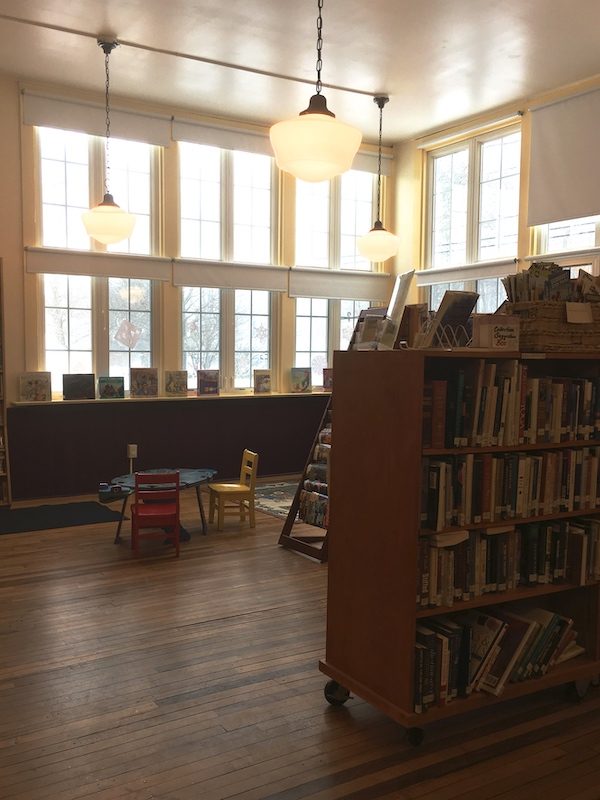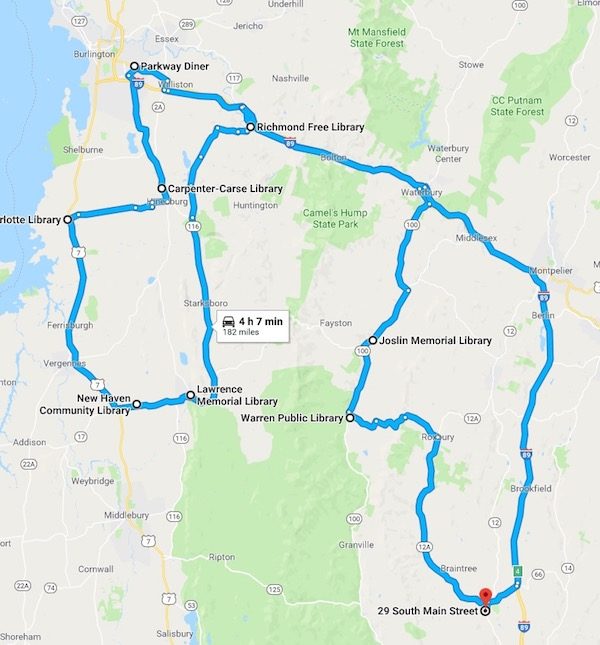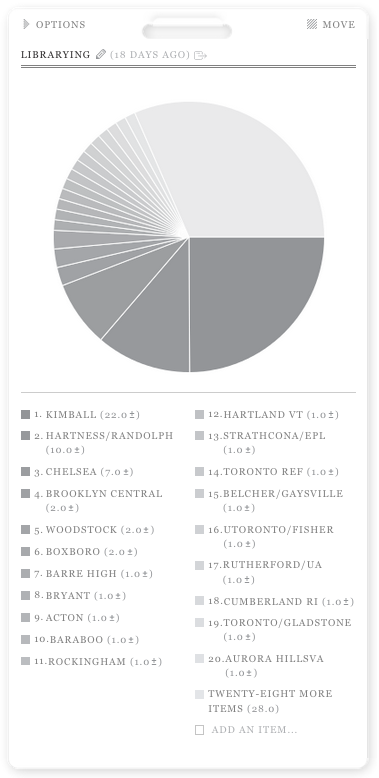
This is a post about rural libraries and money on the occasion of Town Meeting week. Town Meeting happened last week. Most Vermont libraries receive their money through the town and Town Meeting is a time to discuss library funding. I am a sub at the library in my town, enough to go to staff meetings but not enough to work there all the time. I also do drop-in time both at my local library and at one “over the mountain” in the next town. Here are a few anecdotes about how local libraries manage their money situations. Continue reading “Vermont libraries and their money and towns”
Tag: libraries
2018 in Libraries
I continue to visit libraries every chance I get. This year I worked in my local library so my visit count is way up, I also gave my privacy talk at six Vermont libraries which was more visits. The rest were working on my VT 183 project or just curiosity. The pie chart isn’t that interesting, but you can see it here. I decided to just include a photo of one of the great libraries I visited in Warren Vermont.
This year I went to 45 libraries in six states and one Canadian province. One hundred and three visits total. Previous years: 2017, 2016, 2015, 2014, 2013, 2012, 2011, 2010, 2009 and some reviews from 2003. Continue reading “2018 in Libraries”
Every state library association website
We’re working on some stuff at VLA that has necessitated looking at other state library association websites. I have found them maddening to track down. Here is a list I have created from this Wikipedia list and this ALA list (which has additional information). Something incorrect? Let me know! [note: an updated version of this now lives on the Vermont Library Association website] Continue reading “Every state library association website”
Back at my Vermont 183 project

It’s been a while since I talked about my library visiting in earnest. Vermont has a 251 Club, a pretty informal group who have the aim to visit all of Vermont’s 251 towns. I love the idea (I’ve been to all the towns, now going back to photograph them) and have extended it to libraries. The Passport to Vermont’s Libraries project that VLA did for three years was basically an outgrowth of this. But now it’s just me and my list and map and car.
Yesterday I gave my Practical Privacy talk in Richmond Vermont (pop. 4000-ish) and had the day free beforehand. I figured I’d go for a drive. I started with VLA’s map of all the public libraries in the state, then used a new tool I’d just made, a list of all the public library websites in the state. From there I made a list of which libraries would actually be OPEN (this is more challenging than it might seem in a library where some libraries are only open 14 hours) and charted my course. I managed to see seven libraries in one long day, had two meals with interesting women–Mary the director of Fletcher Free, and Julie a techie powerhouse who does coding and coaching and public speaking–and gave my talk in the big upstairs room of the Richmond library which had previously been both a church and a basketball court. Here’s where I went. Continue reading “Back at my Vermont 183 project”
2017 in libraries

I love to visit libraries. Every year I make a list and think about it at year’s end. This year I went to 48 libraries in seven states and three Canadian provinces. Eighty-seven library visits total. Previous years: 2016, 2015, 2014, 2013, 2012, 2011, 2010, 2009 and some reviews from 2003. Continue reading “2017 in libraries”


